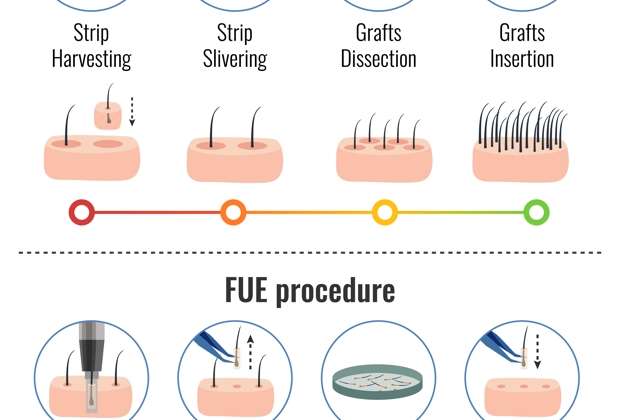
Misconceptions About Hair Transplantation
Contents
- 1 Introduction
- 1.1 1. Understanding Hair Transplant
- 1.2 2. Myth: Hair Transplant is Solely for Men
- 1.3 3. Myth: Hair Transplant Exclusively Utilizes Scalp Hair
- 1.4 4. Myth: Immediate Results
- 1.5 5. Myth: Painful Procedure
- 1.6 6. Myth: Unsightly Scarring
- 1.7 7. Myth: Unnatural Appearance
- 1.8 8. Myth: Universal Suitability
- 1.9 9. Myth: Permanent Solution
- 1.10 10. Myth: Prohibitively Expensive
- 1.11 Conclusion
- 1.12 Frequently Asked Questions (FAQs)
Introduction
Hair transplant has emerged as a popular solution for individuals grappling with hair loss issues. However, amidst its rising popularity, several misconceptions and myths have clouded people’s understanding of this procedure. In this comprehensive article, we aim to debunk the common myths surrounding hair transplant, providing factual information to help individuals make informed decisions about their hair restoration journey.
1. Understanding Hair Transplant
Before delving into debunking myths, it’s crucial to understand what hair transplant entails. A brief overview of the procedure and its variants.
2. Myth: Hair Transplant is Solely for Men
Fact: Contrary to popular belief, hair transplant is not exclusive to men. It is equally viable for women experiencing hair loss concerns.
3. Myth: Hair Transplant Exclusively Utilizes Scalp Hair
Fact: Modern hair transplant techniques, such as Follicular Unit Extraction (FUE) and Follicular Unit Transplantation (FUT), allow for the extraction of hair follicles from various parts of the body, including the beard, chest, and other donor sites, expanding the pool of available grafts.
4. Myth: Immediate Results
Fact: Patience is paramount when it comes to hair transplant outcomes. Visible results typically manifest over several months post-procedure as the transplanted hair gradually grows and thickens.
5. Myth: Painful Procedure
Fact: With advancements in anesthesia and minimally invasive techniques, the discomfort associated with hair transplant procedures is minimal and manageable.
6. Myth: Unsightly Scarring
Fact: Modern hair transplant methods, particularly FUE, leave tiny, almost imperceptible scars, ensuring a natural-looking outcome without conspicuous scars.
7. Myth: Unnatural Appearance
Fact: A skilled surgeon can achieve remarkably natural-looking results by strategically transplanting hair follicles to mimic the natural hairline and distribution.
8. Myth: Universal Suitability
Fact: Not everyone is an ideal candidate for hair transplant. Factors such as the extent of hair loss, donor availability, medical history, and realistic expectations play a crucial role in determining candidacy.
9. Myth: Permanent Solution
Fact: While hair transplant can yield long-lasting results, it does not halt the natural progression of hair loss. Maintenance and potential future procedures may be necessary to preserve results over time.
10. Myth: Prohibitively Expensive
Fact: While cost varies depending on factors such as the clinic’s location, surgeon’s expertise, and technique employed, many clinics offer financing options to make hair transplant more accessible.
Conclusion
In conclusion, understanding the reality behind common misconceptions about hair transplant is essential for individuals contemplating this procedure. Armed with accurate information, they can navigate the process with confidence, achieving the desired results effectively.
Frequently Asked Questions (FAQs)
- When can I expect to see noticeable results after a hair transplant?
- Visible improvements typically become apparent within 3 to 6 months post-procedure, with full results visible within 12 to 18 months.
- Is there any age limit for undergoing hair transplant surgery?
- While there is no strict age limit, candidates should ideally be in good health and have stabilized their hair loss pattern before considering the procedure.
- Can I undergo hair transplant if I have existing medical conditions?
- The suitability for hair transplant varies based on individual health conditions. Consultation with a qualified surgeon is crucial to assess candidacy and potential risks.
- Are there any lifestyle restrictions following a hair transplant?
- While post-operative care instructions may include temporary lifestyle modifications, such as avoiding strenuous activities and protecting the scalp from direct sunlight, most individuals can resume normal activities within a few days to weeks.
- Can transplanted hair fall out after the procedure?
- It is common for transplanted hair to shed within the first few weeks post-procedure. However, this is a natural part of the hair growth cycle, and new hair will regrow within a few months.

